When to Neuter or Spay Great Pyrenees? Factors to Consider & Ideal Timing

The Great Pyrenees is a truly majestic and ancient dog breed. These dogs are enormous in size and personality and are currently the 66th most popular purebred companion canine (out of 196 breeds) in the United States.
Unless you plan to breed or show your Great Pyrenees, in which case you will need to keep your dog intact, you are probably planning to have your Pyr neutered in the future.
But when is the right time to neuter a Great Pyrenees? Special considerations exist when planning a neutering procedure for a giant dog breed like the Great Pyrenees.
This article tells you exactly what you need to know to choose the right time to neuter your Great Pyrenees.
When to Neuter or Spay Great Pyrenees?
Choosing the best time to neuter or spay your Great Pyrenees is critical, especially given their size. You may need to wait for these dogs until they’re 12-18 months old. Early neutering can lead to potential health risks for your dog.
To avoid these risks, it is generally recommended by dog breeders and veterinarians to wait until your dog reaches at least one year of age, with some suggesting a two-year wait. For more specific guidance, it is recommended that you consult your veterinarian.
See a Great Pyrenees Right After Getting Neutered
In this short YouTube video, a Great Pyrenees owner shares precisely what you can expect right after your Great Pyrenees has the neutering procedure.
The Best Time to Neuter or Spay a Great Pyrenees Dog
As you probably noticed here earlier, when we talked about the right time to neuter a Great Pyrenees, there is more than a bit of disagreement amongst dog breeders, owners, and canine veterinarians about the best time to do this procedure.
Let’s talk about why this disagreement exists.
Great Pyrenees dogs are giant breed dogs and slow to mature
As you know, the Great Pyrenees dog can quickly grow up to weigh 100+ pounds and stand 32 inches tall (paw pads to shoulders).
Unlike a small dog who only has a little growing to get from puppyhood to adulthood, the Great Pyrenees has to grow a lot to grow up!
This means that a lot is happening inside a Great Pyrenees puppy, which is different from what happens inside a small dog.
If the bones grow too quickly, they will be calcium-poor and fragile.
As the Animal Health Clinic of Fargo points out, when the bones grow too fast, the cartilage at the end of each bone will have a hard time attaching to the bone how it needs to form the joints correctly.
Several difficult, lifelong health problems can occur if this happens. But what does this have to do with neutering your Great Pyrenees puppy?
If your puppy is neutered too early in life, certain hormones may be switched off permanently, which is also known to affect a dog’s growth and development.
As the Star Tribune points out, the resulting hormonal deficiencies may cause a dog to grow too much or not enough.
Bones may be of different lengths, impacting the formation of joints, ligaments, tendons, muscles, and other critical infrastructure.
Great Pyrenees are vulnerable to canine cancer.
As Jayhawk Great Pyrenees breeder points out, the Great Pyrenees that are neutered too early in life have a noticeably greater risk of certain common canine cancers, including these:
- Osteosarcoma (bone cancer).
- Hemangiosarcoma (cancer of the blood vessel walls).
- Urinary tract cancer. Prostate cancer (male dogs).
These specific types of cancer in canines are linked to too early neutering or spaying. But they are also linked to neutering or spaying at any age, which is essential to consider.
The next section will examine the pros and cons of neutering or spaying your Great Pyrenees from a health perspective.
Health Pros of Neutering or Spaying a Great Pyrenees Puppy
These are some of the most compelling health benefits of neutering or spaying your Great Pyrenees puppy.
For male Great Pyrenees dogs
- Removes the risk of testicular cancer.
- Lowers the risk of perianal fistulas.
- Lowers the risk of prostate problems.
For female Great Pyrenees dogs
- Lowers the risk of mammary tumors.
- Lowers the risk of pyometra (infection of the uterus).
- Lowers the risk of perianal fistulas.
- Eliminates the risk of uterine, ovarian, and cervical cancer.
Health Cons of Neutering or Spaying a Great Pyrenees Puppy
These are the major health drawbacks you may face when neutering or spaying your Great Pyrenees puppy.
For male Great Pyrenees dogs
- Increases the risk of bone cancer (osteosarcoma), especially if done before one year old.
- Increases the risk of (heart cancer) cardiac hemangiosarcoma.
- Increases the risk of cancer of the urinary tract.
- Increases the risk of prostate cancer.
- Increases the risk of thyroid disease.
- Increases the risk of orthopedic problems.
- Increases the risk of later-life obesity and associated health problems. Increases the risk of cognitive impairment in the senior years. Increases the risk of negative reactions to vaccines.
For female Great Pyrenees dogs
- Increases the risk of bone cancer (osteosarcoma), especially if done before one year old.
- Increases the risk of (heart cancer) cardiac hemangiosarcoma and (cancer of the spleen) splenic hemangiosarcoma.
- Increases the risk of urinary tract tumors.
- Increases the risk of thyroid disease.
- Increases the risk of urinary tract infections.
- Increases the risk of obesity and associated health issues.
- Increases the risk of disorders of the vulva and vaginal tract.
- Increases the risk of incontinence.
- Increases the risk of orthopedic problems.
- Increases the risk of negative reactions to vaccines.
As the Orthopedic Foundation for Animals Canine Health Information Center database (OFA-CHIC) points out, the Great Pyrenees is known to have a genetic predisposition to the following health issues:
- Hip dysplasia.
- Elbow dysplasia.
- Patellar luxation (trick kneecap).
- Shoulder OCD (osteochondritis dissecans).
- Cardiac issues.
- Thyroid issues.
- Eye issues.
- Hearing issues.
As you can see, many of the known heritable (genetic) issues that a Great Pyrenees puppy can inherit from the parents can also be worsened by neutering or spaying, especially if done before the optimal age.
How Choosing Your Great Pyrenees Breeder Wisely May Reduce Neutering Risk
Because the Great Pyrenees Dog is a relatively popular dog breed in the United States, many Great Pyrenees breeders have a waitlist for available puppies.
High demand can open the door to so-called “backyard breeders” or puppy mill breeders eager to profit from such demand.
While waiting a more extended period for your puppy can feel challenging, it will be worth waiting for a puppy bred through a reputable, responsible, health-focused Great Pyrenees breeder.
Unlike a profit-focused backyard breeder or puppy mill breeder, a responsible Great Pyrenees breeder will take the extra steps to do all of the required and recommended health tests on the parent dogs before allowing them to breed.
This reduces the risk that your puppy will inherit the genes that could lead to orthopedic and joint problems, heart issues, eye or hearing issues, thyroid disease, and other serious health concerns.
Because neutering and spaying a Great Pyrenees puppy is not without risk, you must start your journey with the healthiest possible puppy.
When Is the Right Age to Neuter or Spay a Great Pyrenees Puppy?
To add further confusion to an already confusing issue, recommendations for when to neuter (for males) or spay (for females) a Great Pyrenees puppy often vary by gender.
This is because female Great Pyrenees will generally come into heat for the first time at around six months, well before most veterinarians and breeders recommend that you have spaying done.
Similarly, suppose you have a male Great Pyrenees puppy and don’t want to breed your Great Pyrenees. In that case, the moment your pup becomes sexually mature (again, around the age of six months), there will be a danger of him getting another dog pregnant.
When is the safest time to have a Great Pyrenees puppy neutered
According to the Great Pyrenees Club of Southern Ontario dog owners thread, most Pyr owners have their puppies neutered between the ages of one and two.
There is no “one size fits all” answer to the right time to neuter a given puppy. This is because different puppies come from different breed lines.
Some lines may be smaller and shorter in height and thus mature earlier and finish all their growing. Similarly, some breed lines may be less prone to health issues that can be worsened by too-early neutering.
The safest method is to talk with your canine veterinarian and determine the best age to neuter your particular Great Pyrenees puppy. Your veterinarian can X-ray your dog and tell you if the growing process is complete.
When is the safest time to have a Great Pyrenees puppy spayed
As the same Pyr owner forum mentioned above illustrates, it is essential to take extra precautions before having a Great Pyrenees female puppy spayed.
The first thing you will need to do is double-check to make sure that your female is not pregnant. Double-checking is still a good idea even if you think you know for sure.
As the owners point out, most female Great Pyrenees puppies will come into their first heat cycle (when they first become sexually mature) around the age of six months.
Then the second heat cycle should take place about six months after that. And it is after this second heat cycle that is the earliest you should consider spaying your puppy.
However, if your dog is still growing and the growth plates in the long bones have not yet closed, it may be smart to wait longer before spaying your dog.
Your canine veterinarian can X-ray the leg bones to determine if the growth plates are open or closed. There is no other way to tell for sure without doing the X-rays.
Once your dog has finished growing and the growth plates have closed and hardened permanently, spaying your puppy will be much safer.
The Great Pyrenees Club of America Has Different Guidance
The Great Pyrenees Club of America (GPCA) is the official dog club liaison for the American Kennel Club (AKC) for breeding and show dog standards.
And the club has quite different guidance from what you read above for when you should be neutered or spay your Great Pyrenees.
According to the GPCA, your puppy should be spayed or neutered between six and eight months.
They reason that you will be safe from unwanted litter and your dog will be calmer, happier, and healthier.
However, as you now know, not every Great Pyrenees breeder and owner agrees with this philosophy of early neutering or spaying, especially for a slow-growing giant dog breed like the Great Pyrenees, which can take up to three years to mature fully.
Again, it will be up to you to talk with your dog’s breeder and canine veterinarian to determine the safest time to have your puppy fixed.
What About Rescuing a Great Pyrenees Dog?
One of the many potential benefits of rescuing a Great Pyrenees puppy or adult dog rather than purchasing a dog from a breeder is giving a relinquished dog a new forever home.
The Great Pyrenees is not the right dog for every family. They are giant dogs that shed constantly, bark a lot, and need lots of space, and not all owners are prepared for the commitment.
If you adopt the Great Pyrenees from a rescue charity, there is a good chance they will take care of the neutering or spaying for you at no charge. In this case, you won’t get a say when the procedure is done.
However, if such is available, you should still gather as much information as possible about your new dog’s background, history, health, and parents.
This will inform you about any health issues you may see later in life, whether they are due to early spaying and neutering, genetics, or other reasons.
How to Prepare for Having Your Great Pyrenees Neutered
As PetMD points out, this is normal if you feel nervous or anxious about having your dog neutered or spayed.
Many dog owners get just as nervous (or even more so) about their pet’s surgery as they do for their surgery.
However, the spaying and neutering process is done daily in veterinary clinics worldwide. So as far as surgical procedures go, it is one of the safest.
But there are some special considerations to remember when it is time for your Great Pyrenees to be neutered or spayed.
Great Pyrenees are known to be sensitive to anesthetic
As Pyradigm Great Pyrenees breeder points out, Great Pyrenees is a dog breed with a known sensitivity to anesthesia.
This is why you need your canine veterinarian to know the special dosing requirements for giant breed dogs. Pyrs have a slower metabolism, and sedatives will take longer to kick in, which can lead to overdosing if the vet isn’t aware.
Great Pyrenees are very heavy!
Your Great Pyrenees are likely to be very snoozy after the neutering procedure. But unlike a small breed dog, most people can’t just pick their puppy up and carry them up the stairs.
You may need to have some help to get your dog home after the procedure. Alternatively, consider boarding your dog overnight until it can walk on its safely.
In summary, the Great Pyrenees needs some special consideration when it comes to the issue of the best time for neutering or spaying. You may need to wait until your dog is one or two years older for safety and health reasons.
Ultimately, the most brilliant way to proceed is to discuss your dog’s specific situation and growth rate with your canine veterinarian and then choose the optimal time.
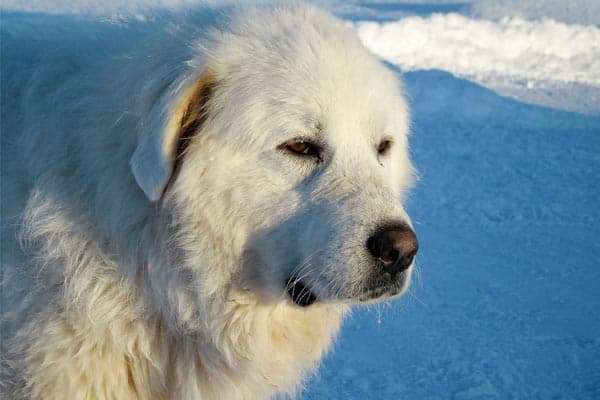
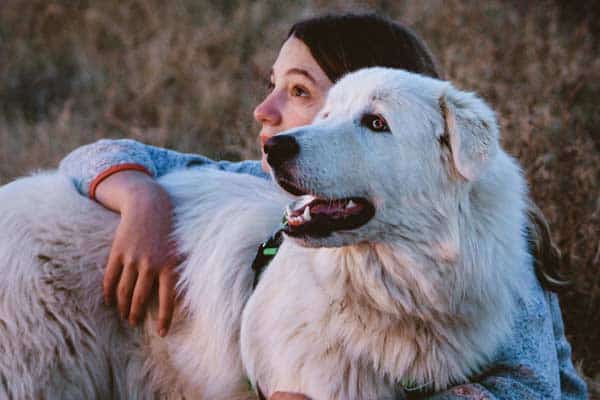
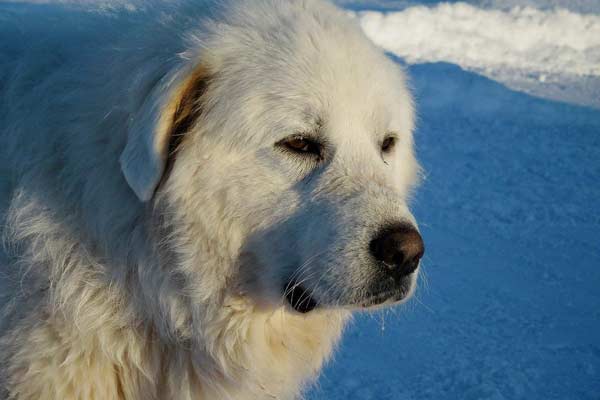

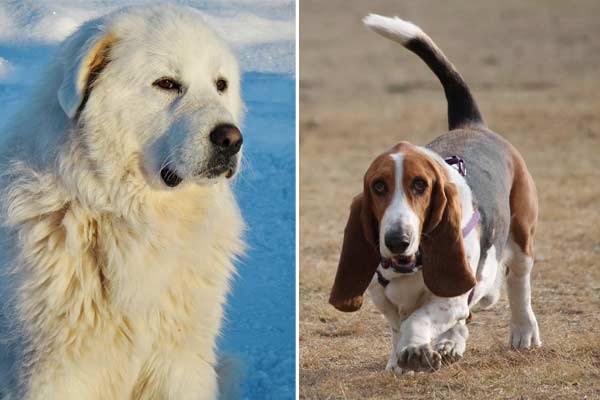
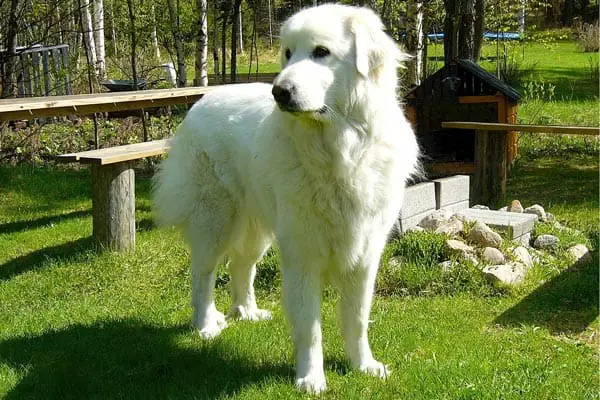
How do you factor in a mixed great pyrenees? I was gifted a female great pyrenees and pitbull mix. She’s about 7 months and in her first year cycle. She’s is appearing to not be following a giant breed growth pattern and is staying at about right below the knee and more on the petite side.
I’m wanting the best for her and am finding it difficult to determine best time to spay her.
Does neutering at 6-8 months effect their growth?
Our 11 month male pyr just went through his change. He cut way back on food, had increased aggression toward his 6 year old golden retriever brother, marking in the house and bossy. This lasted about 1 week to 10 days. I assume this is adolescence. We have had to separate the two brothers but take them on walks together on leashes. It’s almost like he had his first “period”. We are familiar with pyrs and have had 2 in the past. Is this what’s going on? Can he be neutered now? His vet says, “Wait as long as you can stand it!”